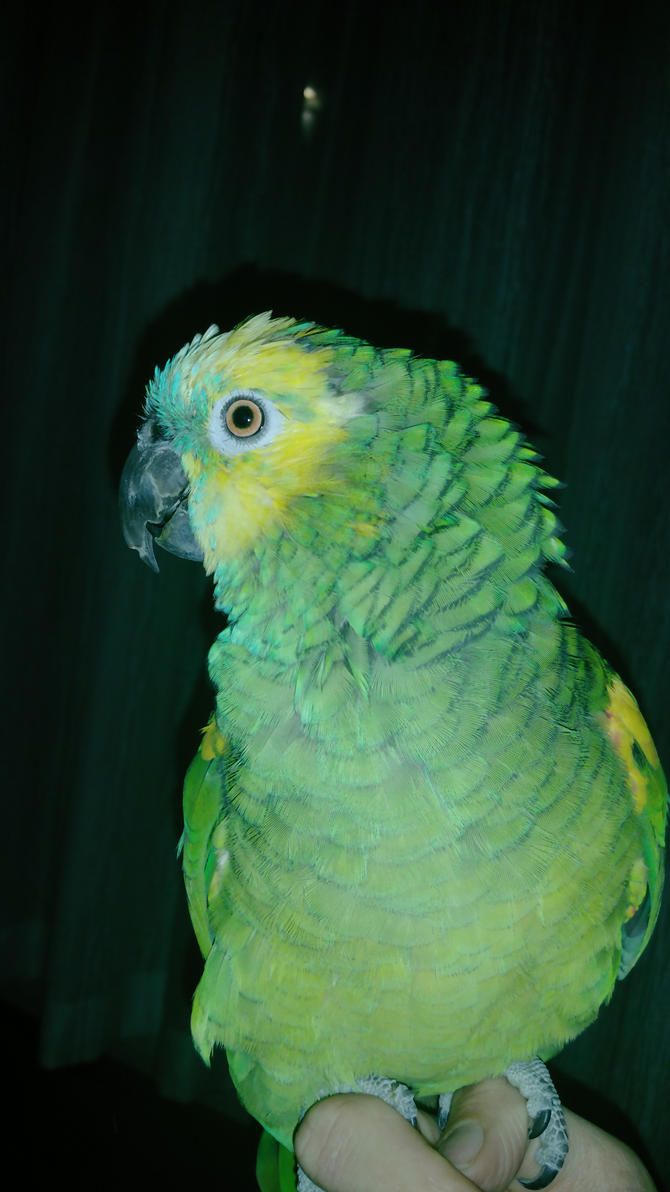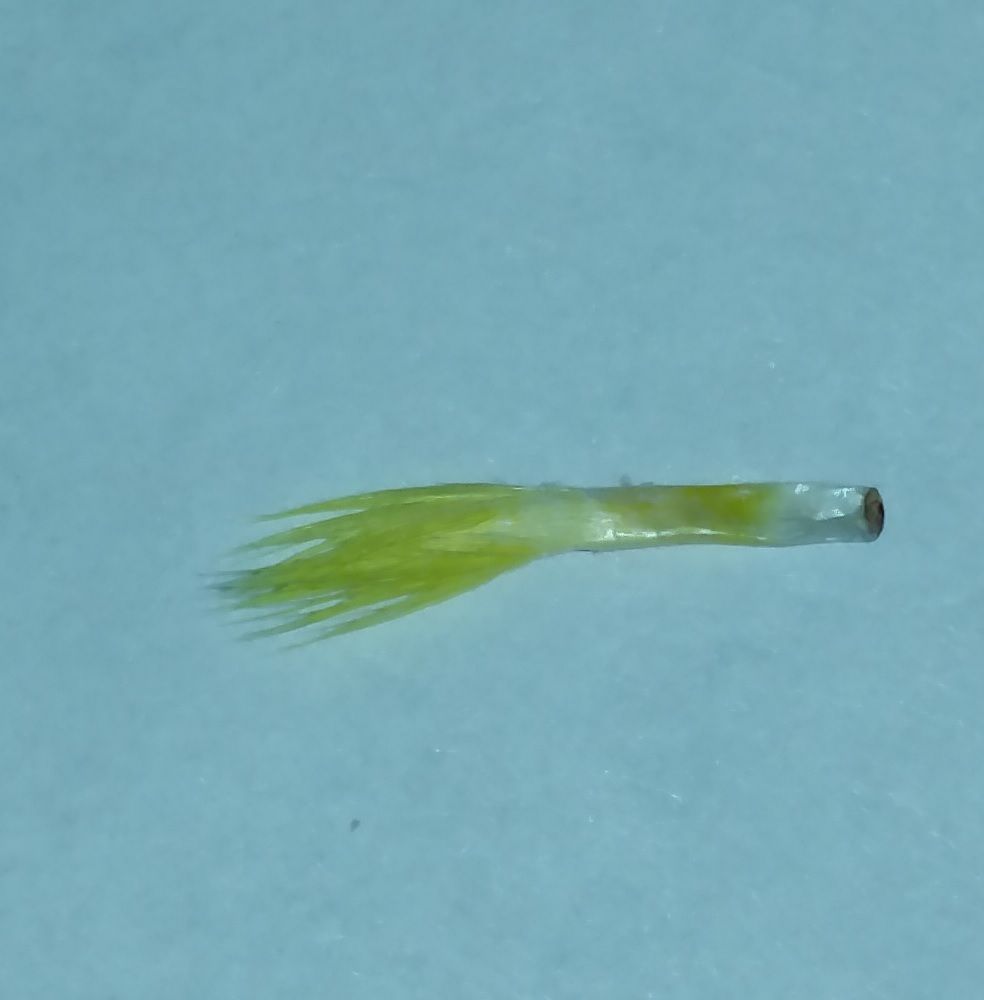Starwing
Member
Hey everyone, It's been about 2 years ago since I last posted something on the forums.
It also has been around 2 years ago since our Blue Fronted Amazon Kobus tested positive for PBFD, and I've had my ups and downs dealing with that truth.

First, the good news is that Kobus is still in, what is visibly, very good health, still has plenty of energy for driving us completely nuts on a daily basis,
and being the absolute paradigm of what living with an Amazon parrot is all about.
Kobus has no noticeable bald patches across his body, and his plumage is intact all over. He has a healthy appetite, and a (mostly) healthy diet of pellets,
palm nut oil, veggies and fruits, and anything he can mooch of of us of the side.
The bad(-ish) news is that I feel that I'm starting to see little signs that Kobus might be not as completely healthy as he wants us to believe, and is
ever-so-slowly getting worse. I've been checking every feather that he ever dropped after "the test results" came back, holding them to a lightbulb
to check for signs of blood or other abnormalities, and until today, nothing exceptionally severe. Sometimes, feathers that came from his wings
(Nonflight, so I guess you can call those secondaries?) look a bit curly, but I suspect this has more to do with the actual shape of the wing,
although, ofcourse, this too had me worried at first.
About just an hour ago, however, I found this tiny contour feather from his face on the bottom of his cage, and although it's just a small one, it's
obviously "just not right". The shaft is pinched, it seems as if there isn't really a "tip", and there's what looks like it's blood on the end of the feather,
even though it's barely a drip.

Kobus head seems to be full of small pinfeathers at the moment (I mean an absolutely, positively unending amount, but only when you feel with
your fingers, not visible from the outside), which *I GUESS* seems pretty normal.
I help him getting rid of the sheath's by pinching them between my thumb and index finger, and he's usually okay with that. Sometimes, I seem
to have found a sensitive one, or one that just "isnt ready yet", and I seem to hurt him a bit, which scares me off.
The first thing that goes through my mind at moments like those is "Oh boy, I just hope it isn't a BAD feather..:17:"
Another thing I have been noticing, but of which I'm not sure that it's absolutely "abnormal", is the amount of down that Kobus seems to "drop"
(or rather, "remove") on a daily basis. Kobus loves to sit on the knee of the lady of the house, but when he does, he spends a lot of time "preening",
and by the end of every evening, a respectable amount of down can be seen where he sat. He's been doing since forever, by the way.
There's a lot of dust, which I suspect is absolutely normal, but the down feathers worry me a bit. Especially because Kobus sleeps in our bedroom,
nowadays, in a sleeping cage. When I wake up in the morning, he usually looks like he's "shivering", not a lot, but just... "a little", noticeable by his
belly, mostly. Our room temperature drops to about 63 degrees Fahrenheit at night, so I'd hardly say it's cold, but still... How much "down" does an
amazon parrot "produce"? Is there even going to be enough to keep him "insulated"?
Kobus sat next to me today and "sneezed", and I actually felt some fluid hit my face. I checked his nostrils, and they seemed clear, I couldn't find
any traces of "moist", nor did they seem irritated, or otherwise looking abnormal. I do feel as if the skin above his beak has become just a tad
more "loose", just as one might sometime have with your fingernail. Is this something to worry about?

I took this picture while I was writing this post
Other than this, Kobus' beak and nails seem absolutely fine, I was worried at first because Kobus does tend to have a flaky beak every now and
again, but just about everytime I see literally ANY other parrot up close, I remind myself that every beak flakes every now and again.
Am I being a regular worrybutt here?
Still, come what may, I just wanted to let you guys know Kobus is still alive and kicking, and I just couldn't help but feel I wanted to reach out to you,
because you've been there to support me when I first got that awful news.
And all the things I worry about that people can convince me of not doing
so is just one less thing to worry about..
It is also because I'm so uncertain (or ... certain) of what might happen, that I feel that I want to share our story, and not go through this all by
ourselves
As of now, you can expect regular updates, the good and the bad :60:
* It goes without saying we have taken every possible precaution to make
sure that Kobus will never infect any other bird. Kobus lives in our house,
and we warn everyone of the condition of our bird. (I actually have
forbidden a coworker whose father has a cockatoo that he, too, regularly
has contact with, to enter my house, as he just came along to borrow my
buzzsaw, and I sure as heck don't want anyone's bird to become sick!
It also has been around 2 years ago since our Blue Fronted Amazon Kobus tested positive for PBFD, and I've had my ups and downs dealing with that truth.

First, the good news is that Kobus is still in, what is visibly, very good health, still has plenty of energy for driving us completely nuts on a daily basis,
and being the absolute paradigm of what living with an Amazon parrot is all about.
Kobus has no noticeable bald patches across his body, and his plumage is intact all over. He has a healthy appetite, and a (mostly) healthy diet of pellets,
palm nut oil, veggies and fruits, and anything he can mooch of of us of the side.
The bad(-ish) news is that I feel that I'm starting to see little signs that Kobus might be not as completely healthy as he wants us to believe, and is
ever-so-slowly getting worse. I've been checking every feather that he ever dropped after "the test results" came back, holding them to a lightbulb
to check for signs of blood or other abnormalities, and until today, nothing exceptionally severe. Sometimes, feathers that came from his wings
(Nonflight, so I guess you can call those secondaries?) look a bit curly, but I suspect this has more to do with the actual shape of the wing,
although, ofcourse, this too had me worried at first.
About just an hour ago, however, I found this tiny contour feather from his face on the bottom of his cage, and although it's just a small one, it's
obviously "just not right". The shaft is pinched, it seems as if there isn't really a "tip", and there's what looks like it's blood on the end of the feather,
even though it's barely a drip.

Kobus head seems to be full of small pinfeathers at the moment (I mean an absolutely, positively unending amount, but only when you feel with
your fingers, not visible from the outside), which *I GUESS* seems pretty normal.
I help him getting rid of the sheath's by pinching them between my thumb and index finger, and he's usually okay with that. Sometimes, I seem
to have found a sensitive one, or one that just "isnt ready yet", and I seem to hurt him a bit, which scares me off.
The first thing that goes through my mind at moments like those is "Oh boy, I just hope it isn't a BAD feather..:17:"
Another thing I have been noticing, but of which I'm not sure that it's absolutely "abnormal", is the amount of down that Kobus seems to "drop"
(or rather, "remove") on a daily basis. Kobus loves to sit on the knee of the lady of the house, but when he does, he spends a lot of time "preening",
and by the end of every evening, a respectable amount of down can be seen where he sat. He's been doing since forever, by the way.
There's a lot of dust, which I suspect is absolutely normal, but the down feathers worry me a bit. Especially because Kobus sleeps in our bedroom,
nowadays, in a sleeping cage. When I wake up in the morning, he usually looks like he's "shivering", not a lot, but just... "a little", noticeable by his
belly, mostly. Our room temperature drops to about 63 degrees Fahrenheit at night, so I'd hardly say it's cold, but still... How much "down" does an
amazon parrot "produce"? Is there even going to be enough to keep him "insulated"?
Kobus sat next to me today and "sneezed", and I actually felt some fluid hit my face. I checked his nostrils, and they seemed clear, I couldn't find
any traces of "moist", nor did they seem irritated, or otherwise looking abnormal. I do feel as if the skin above his beak has become just a tad
more "loose", just as one might sometime have with your fingernail. Is this something to worry about?

I took this picture while I was writing this post
Other than this, Kobus' beak and nails seem absolutely fine, I was worried at first because Kobus does tend to have a flaky beak every now and
again, but just about everytime I see literally ANY other parrot up close, I remind myself that every beak flakes every now and again.
Am I being a regular worrybutt here?
Still, come what may, I just wanted to let you guys know Kobus is still alive and kicking, and I just couldn't help but feel I wanted to reach out to you,
because you've been there to support me when I first got that awful news.
And all the things I worry about that people can convince me of not doing
so is just one less thing to worry about..
It is also because I'm so uncertain (or ... certain) of what might happen, that I feel that I want to share our story, and not go through this all by
ourselves

As of now, you can expect regular updates, the good and the bad :60:
* It goes without saying we have taken every possible precaution to make
sure that Kobus will never infect any other bird. Kobus lives in our house,
and we warn everyone of the condition of our bird. (I actually have
forbidden a coworker whose father has a cockatoo that he, too, regularly
has contact with, to enter my house, as he just came along to borrow my
buzzsaw, and I sure as heck don't want anyone's bird to become sick!
